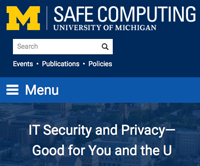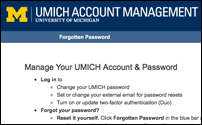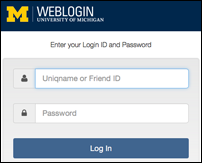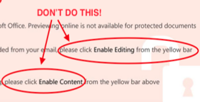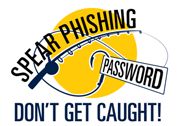You now have updated guidance and clearly defined responsibilities for your unit's vulnerability management and vendor security and compliance. Andrew Rosenberg, interim U-M vice president for information technology and Michigan Medicine chief information officer, recently approved these two new standards:
- Third Party Vendor Security and Compliance (DS-20). When a vendor service is used with university data, that data is at risk unless the vendor meets security and compliance requirements set by the university. Many serious data breaches reported in the news of late have resulted from issues with third party vendor services.
- Vulnerability Management (DS-21). Updating and patching your systems on a routine basis and in response to security alerts helps protect university systems and data from zero-day attacks like Heartbleed. Timely vulnerability remediation is also an important component of regulatory compliance.
New guidance on Safe Computing outlines your unit's responsibilities and describes how you can meet them to provide appropriate data protection:
- Vulnerability Management. Information about regular and on-demand scans, vulnerability alerts from Information Assurance, and unit responsibilities for vulnerability remediation.
- Third Party Vendor Security & Compliance. Information to help you select a vendor that meets compliance requirements, include IT security and privacy in your vendor contract, and manage ongoing vendor compliance. This is required if your unit uses a non-university product or service with university data.
See the IT Policies Under Review page for a list of the new standards in the final stage of the review process that will support the revised Information Security Policy (SPG 601.27).


